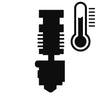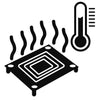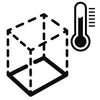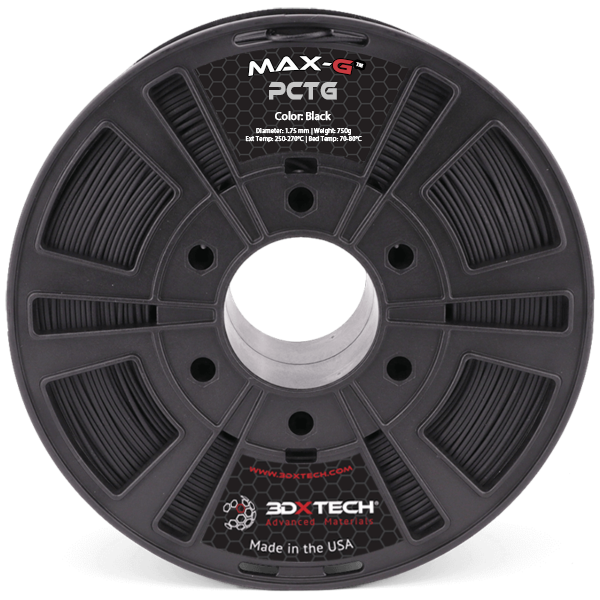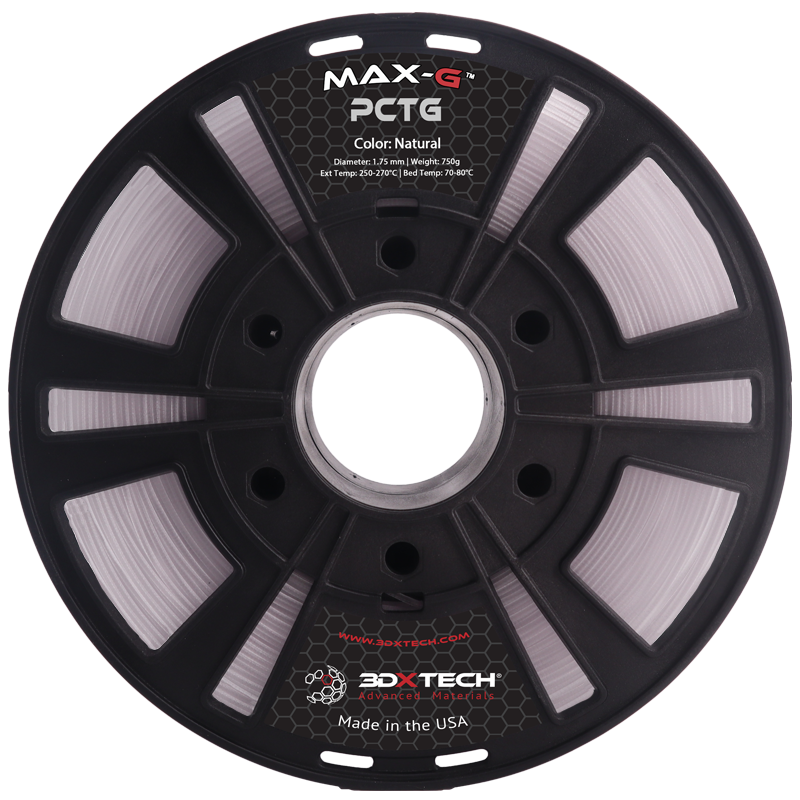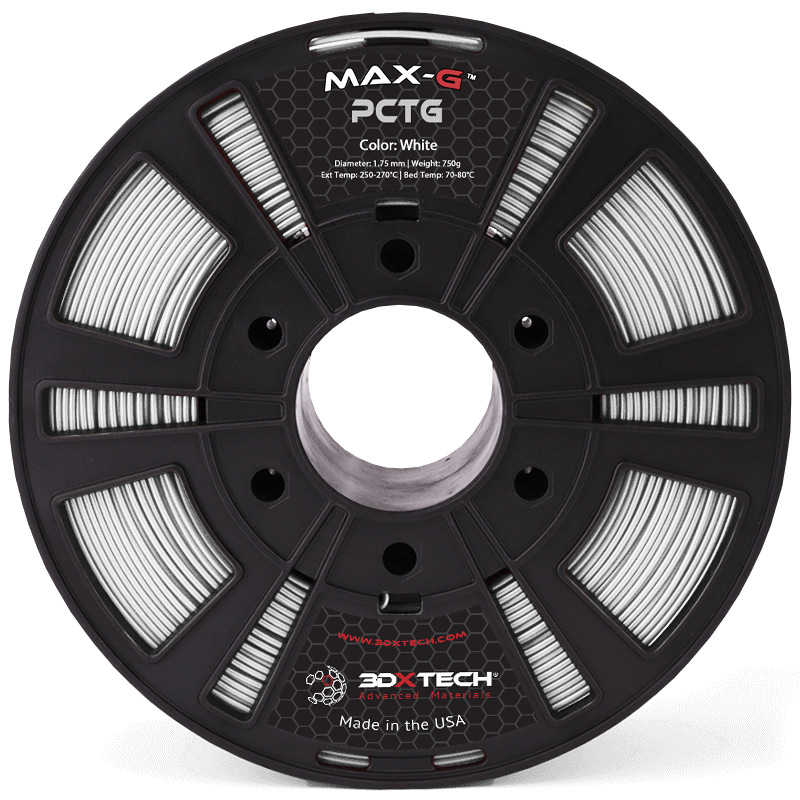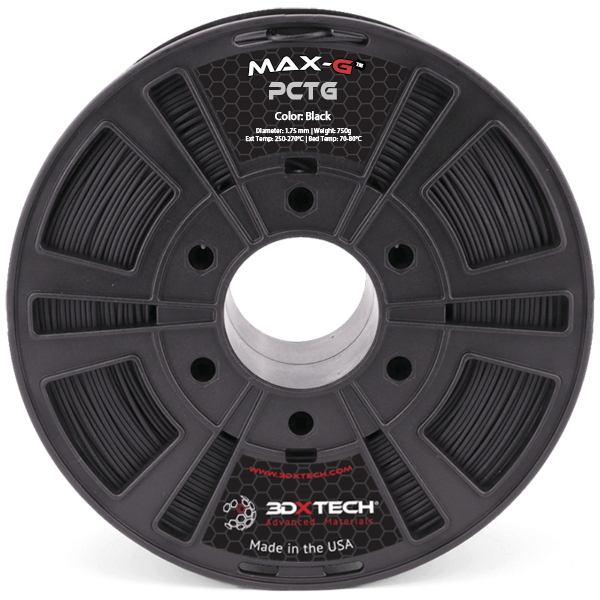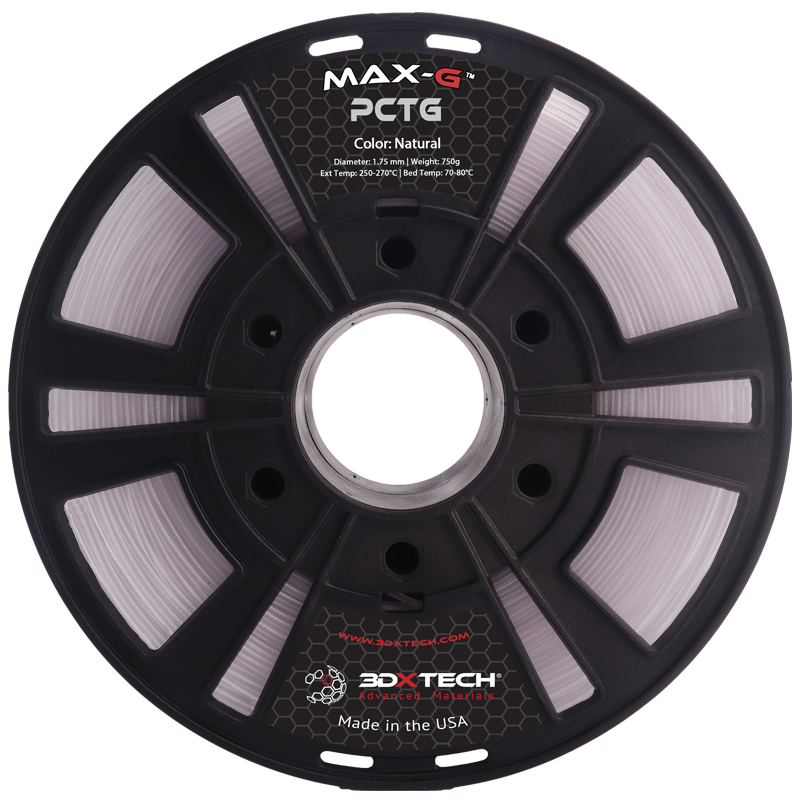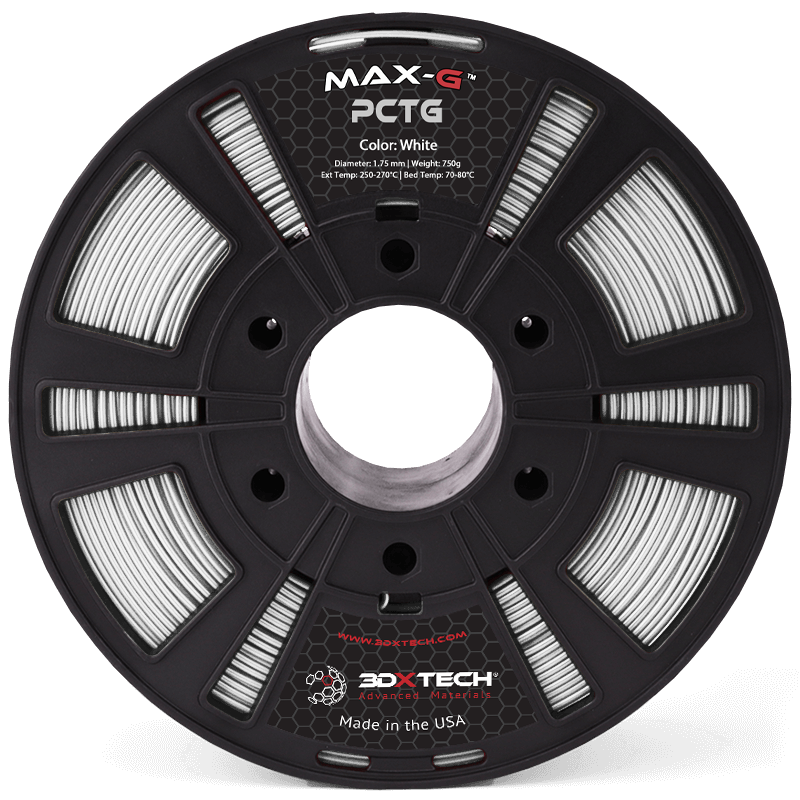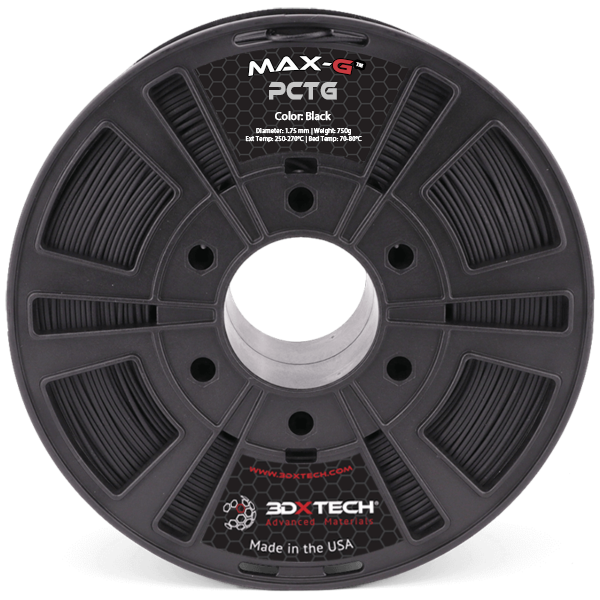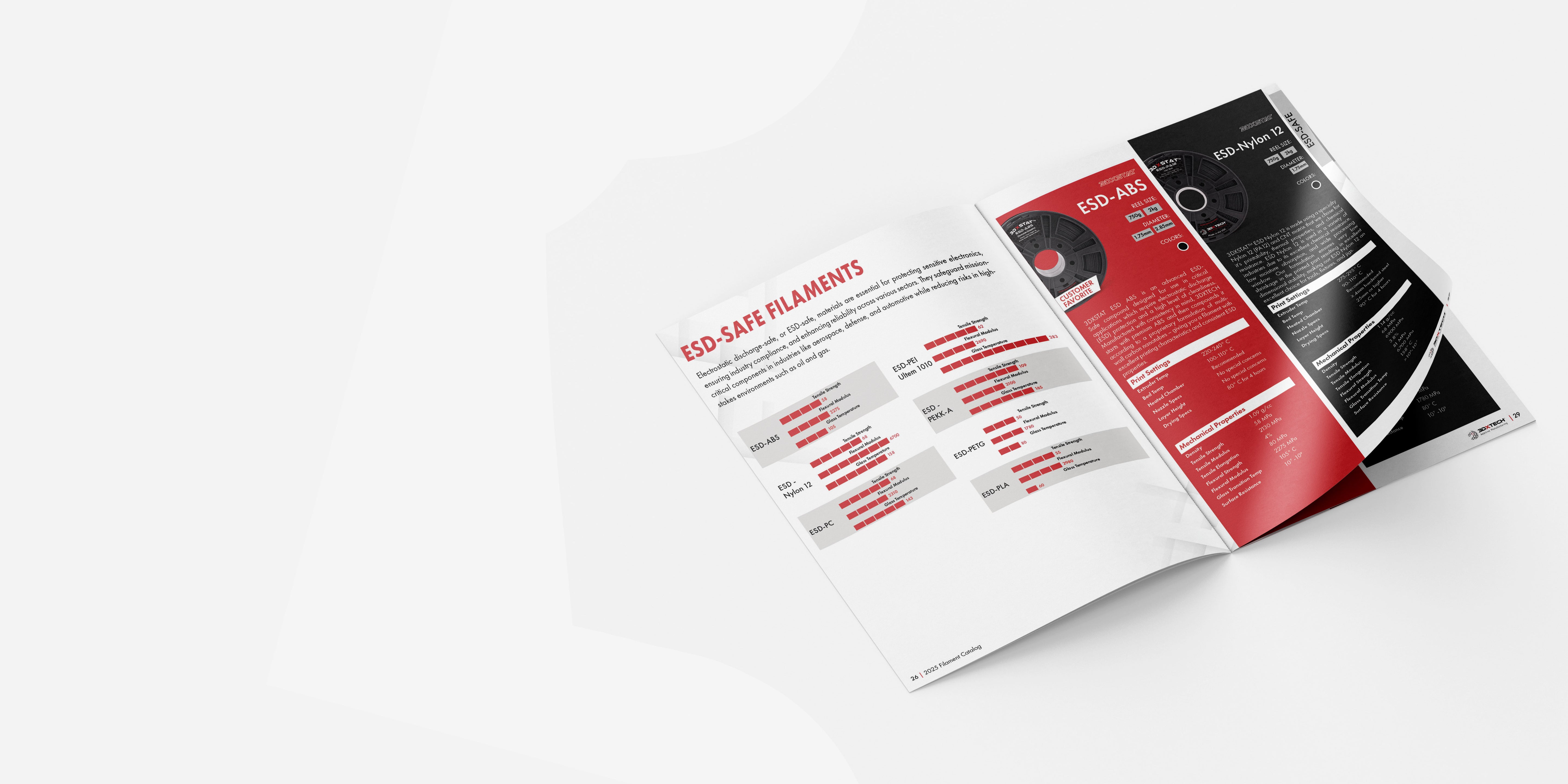MAX-G™ PCTG
MAX-G PCTG is an excellent alternative to the ever-popular PETG. Both PCTG and PETG are polyesters and great printing materials, but PCTG offers improved clarity, chemical resistance and impact resistance vs. PETG – making it a more durable engineering-grade option for demanding applications. This material exhibits low shrinkage and excellent dimensional stability making it a go-to for engineering applications. PCTG does not require a heated chamber and is easily printed on most open-source desktop printers.
MADE IN THE USA
We manufacture all of our filaments in our 68,000 ft² manufacturing facility (located in Grand Rapids, Michigan) using state-of-the-art equipment and processes. Our goal continues to be to make the most innovative filaments on the market – targeting difficult end-use applications.

Print Recommendations
